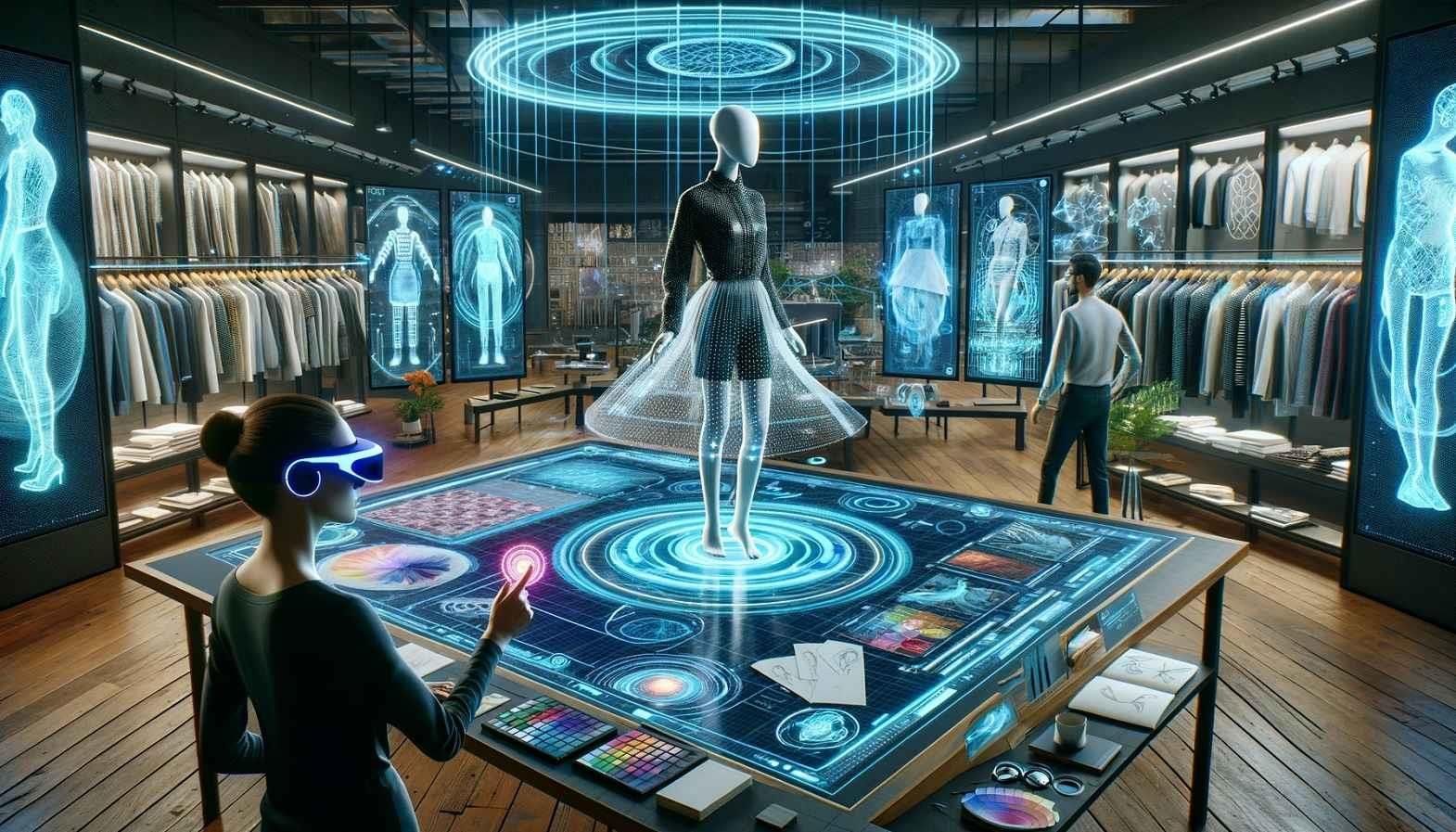Artificial Intelligence (AI) has existed in our lives for many years now. Its primary function has been to work quietly in the background, customising our experiences when we use apps and websites. It is only now, with the advent of easily accessible generative AI models like Open AI’s chat GPT, Midjourney, Google’s Bard etc, that AI has become the new buzzword. Although AI has found various applications in the fashion industry for quite some time, McKinsey & Company predicts that generative AI will contribute an additional $150 billion in revenue to the sector over the next three to five years.
Generative AI algorithms can assist designers in creating unique and innovative clothing designs. By feeding the AI with personalised parameters and design elements, designers can receive numerous design variations in a matter of minutes, saving time and expanding creative horizons. Because of the vast amount of data available to these models and their high computation abilities, they become creative collaborators who can extend the boundaries of what an individual or a team can do. Generative AI is capable of processing various types of ‘unstructured’ data, such as raw text, images, and video. It can then produce diverse forms of media, including fully written scripts, 3-D designs, and lifelike virtual models suitable for video campaigns. Another breakthrough use of Gen AI is super-customisation. With the help of AI technology and AI-fuelled smart production, brands can build products to the unique size of customers at scale. And this same fundamental technology can be applied to customised consumer communication. The more personal the brand’s exchange with the consumer, the higher the chances of brand loyalty and retention.
Moreover, in the area of production and inventory planning, instead of depending solely on trend reports and third-party market analysis for conceptualising upcoming seasonal collections, creative directors of both mass-market fashion retailers and luxury brands are now utilising generative and predictive AI. Technology enables real-time analysis of diverse unstructured data sets and provides accurate results. For instance, it can very quickly aggregate and conduct sentiment analysis on social media videos or model trends by leveraging multiple sources of consumer data. It can advise brands on styles and sizes that will have a higher sell through so they can move towards lean manufacturing. When brands are able to do this at the planning stage, they can save costs and maximise profits without adversely impacting the environment by overproduction.
Sustainability is a pressing concern and casts a grey cloud, especially over the fashion industry. To combat this, AI is being used in the selection of sustainable materials by analysing their environmental impact and durability. Additionally, for the conscientious consumer, transparency, and traceability have become the new cornerstones for building trust with a brand. Blockchain technology, often integrated with AI, enables consumers to trace the entire lifecycle of a garment, from design to production and distribution, helping them make informed purchase decisions.
Further on the customer side, AI enhances the buying experience by enabling accurate digital fittings. AI tools improve immersive experiences through advanced object recognition, natural language processing, and real-time data analysis, thereby making AR more interactive. Using cutting-edge technologies, these tools simulate the appearance of a garment on a customer, thus diminishing the necessity for in-person fittings and lowering the likelihood of returns. Such advancements not only cater to the preferences of shoppers and bolster the efficiency of retailers but also contribute to the reduction of environmental footprint associated with product transportation.
Notably, a leading online retailer has introduced its own GPT, powered by ChatGPT, signalling a significant stride in the integration of AI within the e-commerce landscape. This feature allows customers to interact with the GPT as they would with a stylist and receive holistic recommendation that includes clothing and accessories customised to their gender and previous shopping history. This provides customers with a faster, highly personal, and curated shopping experience.
Some applications using AI can predict multiple variations of looks using the user’s existing wardrobe. This can solve the issue of overconsumption to an extent. The user simply uploads images of all their existing clothing and accessories and the AI model generates different looks that are fresh and based on current trends. As the model continues to learn from the user’s preferences, it provides more and more accurate results.
Generative AI, thus, has the potential to positively impact the entire fashion ecosystem. It has created new job roles such as AI trainers, individuals who tag data sets and prompt engineers, and those who craft prompts based on the known capabilities of engines. While the fashion industry undergoes a dramatic transformation, it is essential to recognise the challenges it faces. Concerns about safeguarding personal information, biases in technology, and the potential impact on traditional fashion careers are among the forefront issues demanding attention as this dynamic sector evolves. In an ideal world, the use of AI for lean manufacturing, product, and material traceability, and extending product lifecycle would greatly benefit the fashion industry while mitigating its impact on our ecology. These are areas that new and existing businesses can consider for research and innovation.
The author is Associate Dean, Fashion Styling, at Pearl Academy, New Delhi.










Comments